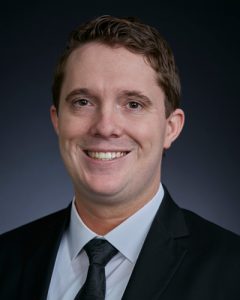Jarrett Wise, a Hastings College 2014 graduate, and six co-authors recently studied how cement in abandoned oil wells reacts in different conditions to predict potential leakage pathways in offshore oil and gas wells. Their research was published in the August 2020 edition of the Journal of Petroleum Science and Engineering.
Wise’s research article, “Wellbore Characteristics that Control Debonding Initiation and Microannuli Width in Finite Element Simulations,” further explored how a change in pressure and temperature impacts the cement within abandoned oil wells. The goal is to try and reduce the chances of it happening in the future.

In the petroleum industry, oil and gas wells go through a life cycle from initiation, to production and to abandonment. When a well is abandoned, it is typically plugged with cement. The cement is assumed to prevent leakage from the well for eternity. However, as evidenced by sidewalks and roads, cement cracks and degrades under normal use. Wise wanted to know if with elevated temperatures and conditions at thousands of feet deep, the cement there could fail as well.
Because it is physically impossible to examine the cement in these wells, Wise’s research used numerical simulations to predict cement behavior.
“From previous research done by myself and the general industry, we know that the most common failure mechanism of the cement is debonding, caused by changes in pressure and temperature, from the steel casing. So, we wanted to quantify the gap size and investigate a solution,” he said.
The most recent research focuses specifically on expressing the width of the gap magnitude given specific pressure and temperature changes to determine how different wellbore properties, like dimensions and depths, affect the gap sizes.
“The cement must stay intact so the environment or freshwater sources are not exposed to wellbore contaminants such as hydrocarbons or greenhouse gases,” he said.
Before pursuing his masters degree in petroleum engineering at Oklahoma State University in Stillwater, Oklahoma, Wise spent time as a research assistant at the University of Wyoming in Laramie, Wyoming, and as a product compounder for Platte Valley Energetics in Alda, Nebraska.
Wise is on track to complete his Ph. D. at the University of Oklahoma in Norman, Oklahoman the fall of 2020.
He said his Hastings College professors have helped prepare him for the coursework within his masters and doctorate programs.
“The intensive coursework I took as a physics major has taught me how to conduct thorough research all while thinking critically,” he said.
Wise co-authored the paper with Alexandra Cedola, Runar Nygaard, Geir Hareland, Oystein Arild, Hans Petter Lohne, and Eric Patrick Ford.

